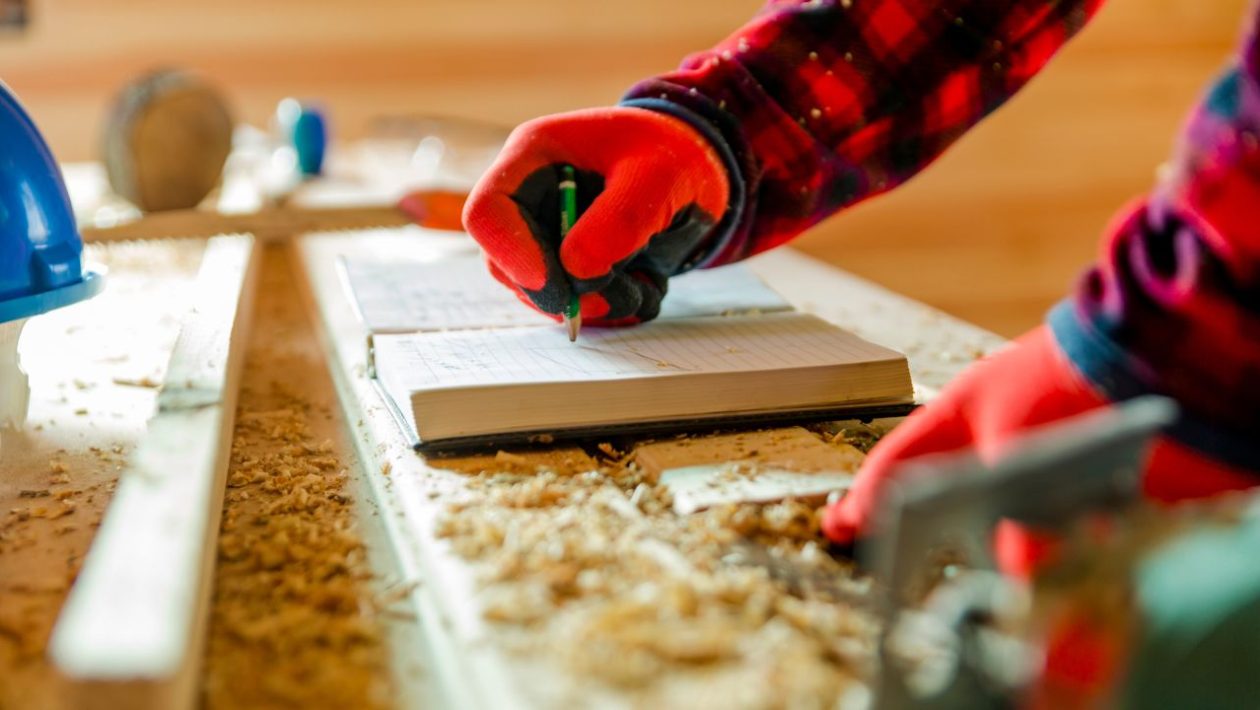Woodworking and carpentry are two closely related crafts that share a deep appreciation for the beauty and functionality of wood. While they may seem similar, there are distinct differences between the two.
In this exploration, we will delve into the historical significance of these crafts, define their unique scopes, examine the tools and projects involved, and uncover the specialized skill sets required.
Prepare to be captivated by the artistry and precision of these timeless crafts as we unravel the clash of craftsmanship between woodworking and carpentry.
Key Takeaways
Woodworking and carpentry are two distinct yet interconnected crafts that have played a significant role in human civilization for centuries. Woodworking focuses on creating various objects and structures using wood, while carpentry primarily involves constructing, repairing, and installing wooden structures.
Both disciplines require precision, attention to detail, and an understanding of different types of wood. By highlighting their unique aspects and contributions, we can appreciate the clash of craftsmanship between woodworking and carpentry and the beauty they bring to the world of woodworking.
Historical Significance
Woodworking and carpentry have played a significant role in human history, contributing to the development of civilizations and the construction of various structures throughout the ages.
These crafts have a long history, with woodworking dating back to prehistoric times and Ancient Egypt, and carpentry being practiced in civilizations such as Ancient Mesopotamia, Egypt, Greece, and Rome.
They have been influenced by different cultures, resulting in unique styles and techniques. Woodworking has been shaped by the ornate and intricate designs of various cultures, while carpentry has adapted to meet the structural needs of different architectural styles.
Over time, both crafts have evolved with the introduction of new tools, materials, and techniques. However, their historical significance remains evident in the construction and preservation of structures worldwide.
Defining Woodworking
Woodworking is a versatile craft that combines technical skills and artistic abilities to shape, cut, join, and finish wood, creating a wide range of objects and structures. It involves various woodworking techniques, such as carving, turning, and marquetry, which allow craftsmen to manipulate wood in intricate and expressive ways.
Woodworking is not just about creating functional items; it is also a form of art. Woodworkers have the ability to transform a simple piece of wood into a work of art through their mastery of various woodworking techniques and their keen eye for design and aesthetics.
Whether it is crafting furniture, sculptures, or ornate structures, woodworking allows artisans to showcase their creativity and craftsmanship in a tangible and lasting form.
Tools and Techniques in Woodworking
Woodworking is a skilled craft that involves using a variety of specialized tools and techniques to shape, join, and finish wood. Woodworkers rely on a wide range of tools, including hand tools like saws, chisels, planes, and carving tools, as well as power tools like drills, routers, and sanders.
Each tool serves a specific purpose and requires a deep understanding of how to use it safely and effectively. Woodworkers also employ various techniques such as cutting, shaping, carving, joinery, and finishing. These techniques require precision, attention to detail, and a mastery of craftsmanship.
Variety of Woodworking Projects
Woodworking offers a wide range of projects that highlight the versatility and artistry of working with wood. Whether you’re a beginner or an experienced woodworker, there is something for everyone to create and enjoy.
Here are some examples of the different types of woodworking projects you can undertake:
- Custom Furniture: Woodworking allows you to design and construct unique pieces of furniture that cater to your specific needs and preferences. From elegant dining tables to cozy bookshelves, the possibilities are limitless.
- Decorative Items: Woodworking also provides an opportunity to create beautiful decorative items like wooden bowls, picture frames, and intricate carvings. These projects allow you to showcase your creativity and add a touch of elegance to your living space.
- Outdoor Projects: Whether it’s building a sturdy wooden deck or constructing a charming garden bench, woodworking enables you to create functional and visually appealing projects for your outdoor spaces.
- Woodworking for Beginners: If you’re new to woodworking, there are plenty of beginner-friendly projects to help you get started. Simple cutting boards, wooden coasters, and small storage boxes are great projects that allow you to develop essential woodworking skills while creating practical items for everyday use.
Woodworking offers endless opportunities for creativity and self-expression, making it a rewarding craft for both beginners and experienced craftsmen alike.
Defining Carpentry
Carpentry is a skilled trade that focuses on the construction, repair, and installation of wooden structures. It plays a crucial role in both residential and commercial building projects. Carpenters are responsible for creating the framework of buildings, including walls, floors, roofs, and staircases. They use a variety of tools such as hammers, saws, chisels, levels, squares, and measuring tapes.
Over the years, carpentry techniques have evolved alongside advancements in tools. Carpenters have adapted their methods to improve efficiency and precision. The evolution of power tools like drills, routers, and sanders has enabled carpenters to work faster and achieve more intricate designs.
Carpentry encompasses a wide range of projects, from building furniture to constructing houses or commercial buildings. Regardless of the project, carpenters must possess a deep understanding of wood properties, joinery techniques, and structural integrity. Through their craftsmanship and attention to detail, carpenters bring wooden structures to life and leave a lasting impact on the built environment.
Role of Carpentry in Construction
Carpentry plays a crucial role in the construction industry by providing the necessary expertise and skills for creating and installing wooden structures in residential and commercial buildings. Its significance in building structures cannot be overstated, as carpenters are responsible for constructing the framework of buildings, including walls, floors, roofs, and staircases.
Carpentry has a significant impact on architectural design, allowing for the incorporation of wooden elements that enhance the aesthetic appeal and functionality of a structure. Additionally, carpentry ensures the structural integrity and stability of buildings, as carpenters utilize their knowledge of wood properties and construction techniques to create strong and durable wooden structures.
Furthermore, carpentry allows for customization and creativity, as skilled carpenters can craft unique and intricate wooden details that add character and beauty to a building.
Specialization and Skillset Comparison
Woodworking and carpentry each have their own areas of specialization and require a specific set of skills, allowing craftsmen to excel in their respective fields.
Woodworking is known for its artistic focus, creating intricate and decorative pieces such as furniture, cabinets, sculptures, and decorative accents.
On the other hand, carpentry specializes in structural work and plays a vital role in construction projects. Carpenters are responsible for building frameworks, installing supports, and ensuring stability in buildings.
While both woodworking and carpentry require precision, attention to detail, accurate measurement, and the ability to read blueprints or plans, they differ in terms of their expertise.
Woodworkers often have expertise in ornamental work, while carpenters specialize in structural aspects.
This differentiation in skills and expertise showcases the unique contributions of each craft to the world of craftsmanship.
Frequently Asked Questions
What Are the Health and Safety Considerations in Woodworking and Carpentry?
Health and safety are crucial considerations in the fields of woodworking and carpentry. It is important for woodworkers and carpenters to prioritize certain measures to ensure the well-being of themselves and others. These measures include ensuring proper ventilation, controlling dust effectively, and utilizing personal protective equipment. By implementing these practices, the risk of respiratory issues, injuries, and accidents can be minimized significantly.
Can Woodworking and Carpentry Be Pursued as Hobbies or Are They Strictly Professional Trades?
Woodworking and carpentry can be enjoyed as both hobbies and professional trades. Engaging in woodworking allows individuals to express their creativity and create unique pieces of art using wood. Similarly, carpentry offers the opportunity for individuals to work with wood and construct functional structures or furniture. Both activities can also provide therapeutic benefits, as the process of working with wood can be soothing and calming. Whether pursued as a hobby or a professional trade, woodworking and carpentry offer a fulfilling and rewarding experience for enthusiasts.
Are There Any Famous Woodworking or Carpentry Masterpieces Throughout History?
Throughout history, there have been many renowned examples of woodworking and carpentry masterpieces. Some notable ones include the intricate wood carvings adorning the Taj Mahal, the elaborate wooden ceilings found in the Palace of Versailles, and the exquisitely crafted wooden furniture created by Thomas Chippendale. These works of art showcase the skill and artistry of master woodworkers, and continue to captivate audiences with their beauty and craftsmanship.
Are There Any Notable Differences in the Types of Wood Used in Woodworking Versus Carpentry?
In the world of woodworking and carpentry, there are distinct differences in the types of wood that are commonly used. Woodworking enthusiasts often work with hardwoods such as oak, walnut, and mahogany. On the other hand, carpentry typically involves the use of softwoods like pine, fir, and cedar. These wood choices are selected based on their specific characteristics and suitability for different projects. It is important to understand these variations when embarking on a woodworking or carpentry endeavor.
How Has Technology and Modern Tools Impacted the Practices of Woodworking and Carpentry?
The impact of automation and modern tools on woodworking and carpentry has greatly transformed these crafts. Technology has streamlined various processes, but the role of craftsmanship remains essential in ensuring the quality and precision of the final products. Woodworkers and carpenters have embraced new tools and techniques that have revolutionized their practices. However, it is important to note that the expertise and artistry of skilled craftsmen are still crucial in producing exceptional results. With the advancements in technology, woodworkers can now achieve greater efficiency and accuracy in their work. These modern tools have simplified tasks such as cutting, shaping, and joining wood, allowing woodworkers to complete projects more quickly and with greater precision. Additionally, technology has expanded the creative possibilities in woodworking, enabling craftsmen to explore innovative designs and techniques. While technology has undoubtedly enhanced the field of woodworking and carpentry, it is the combination of technological advancements and skilled craftsmanship that truly elevates these practices to new heights.
Conclusion
Woodworking and carpentry are two distinct yet interconnected crafts that have played a significant role in human civilization for centuries. Woodworking focuses on creating various objects and structures using wood, while carpentry primarily involves constructing, repairing, and installing wooden structures.
Both disciplines require precision, attention to detail, and an understanding of different types of wood. By highlighting their unique aspects and contributions, we can appreciate the clash of craftsmanship between woodworking and carpentry and the beauty they bring to the world of woodworking.





